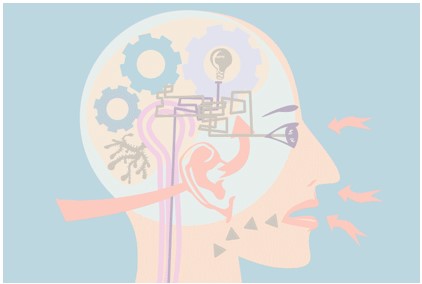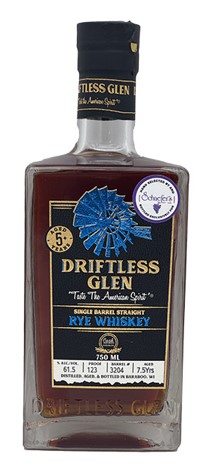“The true art of memory is the art of attention.”
Samuel Johnson, 18th C. British philosopher
Everyone loves a great mystery, right? Sensory memory is a classic mystery. And as with any good mystery some individuals will be better at solving it than others. Part of the appeal of this mystery is its ability to please us as often as it frustrates us. Think of the number of times you have tried to remember the name of your fifth grade science teacher, the color of the car you were in on your first date or the missing ingredient that makes your chili taste very different from your mom’s awesome version. Every day we are bombarded by thousands of experiences from the sunlight streaming into your room dashing all hopes of hitting the snooze alarm (again!) to that minty toothpaste tingle in your mouth as slumber claims you for itself when your head hits the pillow. All of these experiences have an impact on our senses. Their impact resonates and becomes a part of us. In this we are all created equal. And yet, if this is true, why can you remember the flavor of the first beer you drank and the person sitting next to you can’t remember what she had for breakfast yesterday?
The answer, of course, is the subjectivity of the human experience. We all experience similar things in our lifetime, but we all perceive them differently. What is good for you may be bad for someone else. And since experience is cumulative, every experience that you have affects every future experience. For example, many people have had a bad experience with a specific alcohol product (often due to excess) and it affects their ability (or inability, if you will!) to have a positive experience with that product again. Why do you throw out the milk in the refrigerator when you smell it and its smell doesn’t appeal to you? Past experience has taught you that the scent alone assures that the milk is bad. Often, we need only experience something once to develop a preference or dislike of it.
Sensory memory has many components such as visual, auditory, olfactory, tactile, and others. They can operate independently and in concert with each other. They can corroborate each other or send mixed signals that result in confusion. These components have been with us forever, but civilization has separated us from our animal brethren in one particular area: we are no longer ruled by smells. If anything, we tend to take our sense of smell for granted relying instead, for the most part, on what we see, hear and touch. We no longer rely strictly on scents to identify family, locate food, find a receptive mate, locate and define territory or help us avoid calamity. Anomalies do exist. A mother can recognize its baby by its unique smell and infants their mothers.
How does science explain all of this? A short version goes something like this: Our sense of smell, called olfaction, involves the detection and perception of chemicals floating in the air. As these chemicals enter the nose, they dissolve in mucous within a membrane called the olfactory epithelium. Located about 3 inches up and into the nose, the olfactory epithelium has hair cell receptors that respond to individual chemicals. The receptors instantly send messages to the part of our brain that warehouses feelings and memories. On average, humans possess about 40 million olfactory receptors. If that seems like a lot, compare it to your pet dog that proudly owns about 2 billion olfactory receptors! Before you get too jealous of Fido, spend a moment to feel sorry for the over 2 million people in the U.S. who have no sense of smell. This disorder, anosmia, can be caused by a traumatic head injury, tumor or surgery. And let’s not forget that as we age our sense of smell diminishes just as surely as does our vision, hearing, taste and balance.
It is estimated that a human with average olfaction can distinguish between 3,000 and 10,000 different odors. Some we encounter every day while others are experienced once in a lifetime. The signals sent by the olfactory epithelium to the brain go to different areas, many of which are included in the limbic system. As the limbic system is fundamentally involved with memory and emotions, it is easy to understand why a smell often triggers an emotional or physical memory. The smell of an apple pie might remind you of the pleasant summers you spent at Aunt Ethel’s lake cottage. The potential for us to smell and retain that smell in sensory memory is clear. As stated earlier, it is our life experiences that define our sensory memory. The more you experience the bigger the reservoir. By extension, in broadest terms, the more often you experience a scent the easier it is for you to identify that smell.
When we apply all of this science to wine its application is less scientific; in fact, it gets downright personal! You can often tell if you’re going to like or dislike a wine just by the smell. Your developed sense of personal preference influences your perception. Remember, we are only talking about the bouquet of the wine. While the taste of the wine can provide you with pleasure and additional information, the mouth of a wine often merely confirms what your nose already told you. Often, in an impatient rush to taste, we either don’t open ourselves up to the olfactory stimuli, or worse yet, sublimate it. In essence, we screen or dismiss our first instinctive assessment of a wine in favor of what we believe will be the “truth” of the wine in its taste. I cannot stress enough the importance of going with your first impressions and following your instincts when you smell a wine. No impression is too absurd or impossible. The key is in how you interpret the impression.
Always try to be specific in your interpretation. You need to be able to communicate what you experience in the glass in terms that another person can understand. If your impression tells you that a wine smells like your grandmother’s attic trace that impression to its possible core. Is it a musty smell? Is it the scent of cedar from a large cedar closet? Is it the dried flowers she used to have hanging from the rafters? Smelling (and tasting) a wine and being able to express your findings to someone else involves a little detective work. And it can be frustrating. Smells found in wine can be elusive and fragile, but also evocative and haunting. Your diligence in determining the source of the smell will be rewarded by its accuracy and the joy of re-discovery.
When we talk about wine we describe our olfactory impressions by analogy. These analogies, based on our common subjective experiences, provide us with a common objective vocabulary that others can understand. Different fruits, vegetables, woods, flowers, spices, herbs, earth and minerals are the foundation of this vocabulary. Your vocabulary is a powerful tool. No two wines are exactly alike, so be specific and precise in your assessments and descriptions. This will increase your communication’s effectiveness. It will also help solve some of the mystery of smelling and tasting wine!















Comments
Great perspective!